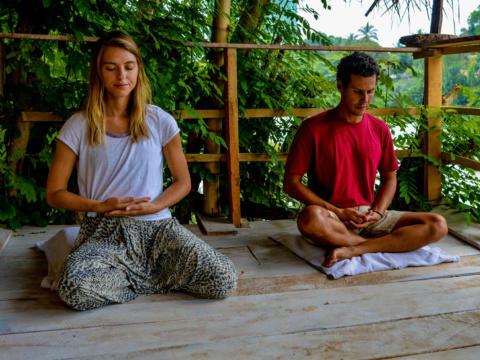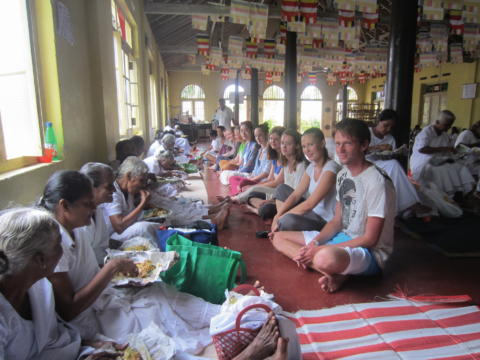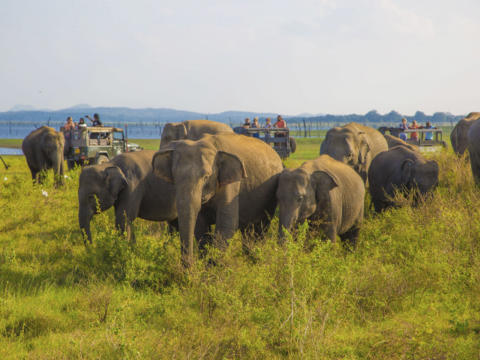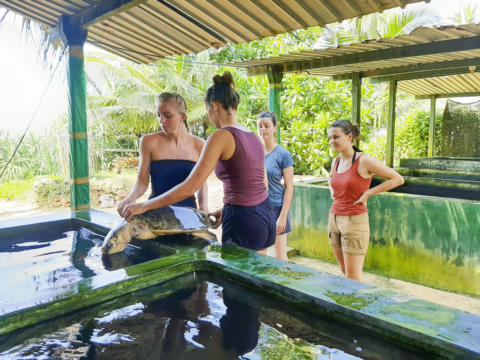Only 405€ per week!
Turtle Conservation
Ambalangoda - Sri Lanka
Turtle Conservation
Ambalangoda - Sri Lanka
Explore the pristine blue waters and white sands of Ambalangoda and take part in conserving sea turtles!
We are located a few steps away from the Indian Ocean which is famous for the sea turtle nesting grounds. Many of the species are becoming extinct due to various environmental factors. You will be a part of the community involved in the conservation of marine life and its habitat.
Program Description
Our program is certified by the Sri Lankan government as the only disabled turtle conservation project in the country.
Our program focuses on the rehabilitation of wounded sea turtles by humans, garbage or trash. Sea turtles are found hurt on the beaches in Sri Lanka who are not able to survive on their own in the ocean. Our project rescues these turtles and takes them to the care of our centre under special supervision.
There are 7 species of turtles that live in the world and out of that 5 species of turtles live in the Indian Ocean. Our program breeds and cares for 4 different species of turtles that live in the Indian Ocean: Loggerhead, Hawksbill, Green and Olive Ridley.
There are 42 disabled turtles living in the centre and in a separate centre we hatch hundreds of turtle eggs to be released to the ocean when they hatch. The purpose of this organization is not for commercial interest but to give these marine animals an opportunity to survive in a safe and healthy environment.
The aim of this project is to conserve turtles by directly taking care of the turtles, enhancing awareness among fishermen and the communities regarding turtle conservation and increasing the number of turtles in the ocean by releasing baby hatchlings to the sea.
Participants with open injuries in their hands should not work with turtles as infections may occur. The coordinators have a lot of experience in caring for these animals, so we ask to follow every instruction knowing it is in the turtle's best interest.
Aims & Objectives
The aim of this project is to conserve turtles by directly taking care of the turtles, enhancing awareness among fishermen and the communities regarding turtle conservation and increasing the number of turtles in the ocean by releasing baby hatchlings to the sea.
Schedule
Monday to Friday
The activities change according to the beach weather conditions and the number of participants but spending time with these marvellous creatures is the main aim of our participants' involvement.
This program requires your dedication and support. Cleaning of the turtles and their tanks at the turtle conservation center are the main things you have to do. That is because it is vital to have a clean and hygienic center for these animals.
Typical activities during the week would include,
- Feeding the turtles (every other day)
- Cleaning the tanks
- Cleaning the turtles
- Cleaning the beach
- Helping with the weekly release of over 100 newborn turtles into the ocean (depends on the weather and season).
Note: This schedule can be changed and/or amended depending on weather conditions, local conditions and unforeseen circumstances.
Note: Please note that we do not recommend participants to go to bars/pubs on the beach. And the local team will not be responsible for any incidents occurring due to the participants’ interactions with locals and other tourists in these places.
Participant Criteria & Requirements
Standard Requirements
Minimum age: –
Maximum age: –
Minimum English level: Basic
CRB required: On Signup
Passport copy required: On Signup
Resume copy required: No
Required qualification: None
Additional Requirements
- Participants below the age of 18 should have parental consent.
- Participants above the age of 65 should have medical clearance.
Additional Equipment
There is no specific additional equipment.
Location
Ambalangoda is a coastal town located in the Galle District, of the Southern Province of Sri Lanka. This little town by the ocean is a sweaty, workaday town, and not touristy. Ambalangoda is known as a Buddhist city in Sri lanka. Ambalangoda is the place where "Masks" originated in Sri Lanka during the days of the kings and this is still thriving sometimes but a bit modernized. In addition the place is reputed for its golden beaches, puppet shows, devil dancing, moonstone, and antique furniture. Plantations of low country tea, rubber, coconut and cinnamon plantations and factories.
About the Accommodation
You will be accommodated in our center which is located a few meters from the ocean.
The beach is closer to the accommodation where you can hang out with fellow participants.
Furthermore, there is a refrigerator which you are welcome to use to store food and beverages. Safety lockers are available to store your belongings. Please bring your own padlock to be used.
Food Arrangements
You will be provided with three meals a day on weekdays and two meals per day on weekends. The meals are mainly Sri Lankan food, consisting mainly of vegetarian dishes including rice and vegetables. You can eat out at any of the local restaurants.
Facilities
Our house is located a 10 minutes walk away from the city center, where you can find anything you might need.
The nearest ATM and supermarket are located a 10 minute walk away from our accommodation.
Activities & Events
No scheduled activities outside the program.
Sights & Surroundings
Visit the Sailatalarama Vihara which lies about 7 km inland from Ambalangoda. This temple sits on a domed hill with broad views over spice plantations and lakes towards the ranges of the Province of Sabaragamuwa. The temple has a 35m-long sleeping Buddha statue, built by donations. Pilgrims approach the dagobas and devale (a complex designed for worshipping a Hindu or local Sri Lankan deity) via 208 steps, but there’s also a road to the top.
Also visit The Ariyapala Mask Museum, with its dioramas and explanations in English, they give an excellent insight into Sri Lankan masks and the meanings behind them. It also sells the booklet The Ambalangoda Mask Museum, a useful publication if you want to delve into the mysterious world of dance, legend and exorcism, and the psychology behind the masks.
Transportation
From this location we do not provide free transport to other locations.
Quick Facts
Name: Democratic Socialist Republic of Sri Lanka
Population: 20 million
Capital: Sri Jayawardenepura Kotte and Colombo
Language: Sinhalese, Tamil
Currency: Sri Lankan Rupee (LKR)
Time zone: UTC +5:30
Country Information
Sri Lanka’s over 2000 years of history and culture can still be seen in every corner of its cities and the details of its ever-beautiful ancient temples. With eight UNESCO World Heritage sites and its short distances between the main sights, Sri Lanka is a country that, despite often being overlooked in itineraries, has left travelers filled with awe.
Visit the sacred home of the world’s oldest living tree in Anuradhapura, wander around the colonial architecture of Colombo, get sun-kissed at the untouched beaches that enclose the territory, snorkel in the crystal-clear waters, head to the hills for a cooler temperature and get surrounded by lush natural vegetation, visit two thousand year-old temples or get overawed at the sight of hundreds of elephants in Minneriya.
While traveling through Sri Lanka you will experience adventures from the highest and chilliest mountains like the famous Adam’s Peak – a stairway mountain considered sacred in three different religions, through the elephant shelters, to the most peaceful beaches up north near Trincomalee and their tiny- one floor- hostels facing the calm sea.
Climate
Sri Lanka is one of the best destinations to visit year-round as the rainy seasons hit the island in opposite locations at different times of the year. That being said, Sri Lanka is a country that can be visited if you know where to go in search for the best weather.
Southwest
The southwest monsoon hits between May and September and the dry season occurs from December to March.
North and coastal regions
The monsoon season happens between October and January while the dry seasons takes places between May and September.
Culture
Sri Lanka is known for its distinct cuisine, indigenous holistic medicines, cricket practices and prestigious export of tea, cinnamon and gemstones. Moreover, the country boasts of a rich artistic tradition which includes music, dance and the visual arts.
Sri Lanka has been shaped by many aspects. The first and most obvious being the heritage of Theravada Buddhism passed on from India. Furthermore, the colonial period left a big mark in the country’s traditions and culture, with British elements being featured in every corner as well as Dutch and Portuguese elements.
Sri Lanka, better known as the “nation of smiling people”, is a paradisiac island that Napoleon described as a world-like biodiversity in a tiny piece of land on the Indian ocean. Multicultural, multi-religious and multi-coloured country, formerly named Ceylon, is known for its delicious black tea, it’s heartwarming inhabitants and its history-filled corners.
The festival of Duruthu celebrates the Buddha’s first visit to Sri Lanka. During Duruthu, thousands of people attend colorful parades, which consist of three processions on the nights before the full moon. The processions consist of fireball performers, drummers, dancers, decorated elephants and the most important – a gigantic tusker treading a white carpet.
On April 13th or 14th Avurudda celebrates the Sinhalese New Year. According to Sinhalese astrology, the new year begins when the sun changes from Meena Rashi (Pisces) to Mesha Rashi (Aries).
During June the Poson Festival takes place on the full moon day of June and celebrates the arrival of Buddhism, which occurred when Arahat Mahinda, the son of the emperor of India, converted King Devanampiyatissa to Buddhism.
During October or November, Diwali the Festival of Lights is celebrated. Diwali is an ancient Hindu festival that signifies the victory of light over darkness, knowledge over ignorance, hope over despair, and good over evil. It is celebrated with millions of lights shining over houses, temples, and buildings. Diwali is celebrated between mid-October and mid-November, on the darkest, new moon night of Karitika.
In Sri Lanka, it is tradition to take an oil bath in the morning, wear new clothes, exchange presents and sweets and visit the Koil, a Hindu Temple. In the evenings, oil lamps are lit to invite the blessings from the goddess of wealth.
Transportation
Plane
Flying between major locations in Sri Lanka such as Galle, Colombo, Nuwara Eliya and others is possible with Aero Lanka and Srilankan Airlines. Moreover, Srilankan Airlines runs small seaplanes, which give you a great aerial view of the island.
Bus
Buses are a option to get around Sri Lanka, albeit quite uncomfortable. For instance, for less than a Euro you can get almost halfway around the island in a bus without air conditioning. Luxury buses with air conditioning also exist at a higher price which are still very inexpensive.
Train
Sri Lanka boasts of an extensive railway system that will get you almost anywhere around the country. Moreover, Sri Lanka is known for its picturesque scenery that can be best viewed in a train journey. In fact, there are observation carts in most trains for tourists that will allow you to better take in the beauty of your surroundings.
In most cases, getting around by train is the cheapest option. There are three classes: 1st, 2nd and 3rd class. In most Intercity and Express trains, however, only 1st and 2nd are offered. Do keep in mind that trains from one popular destination to another (i.e. Colombo – Kandy or Galle – Colombo) often get overbooked, so it is best to reserve a seat much in advance.





